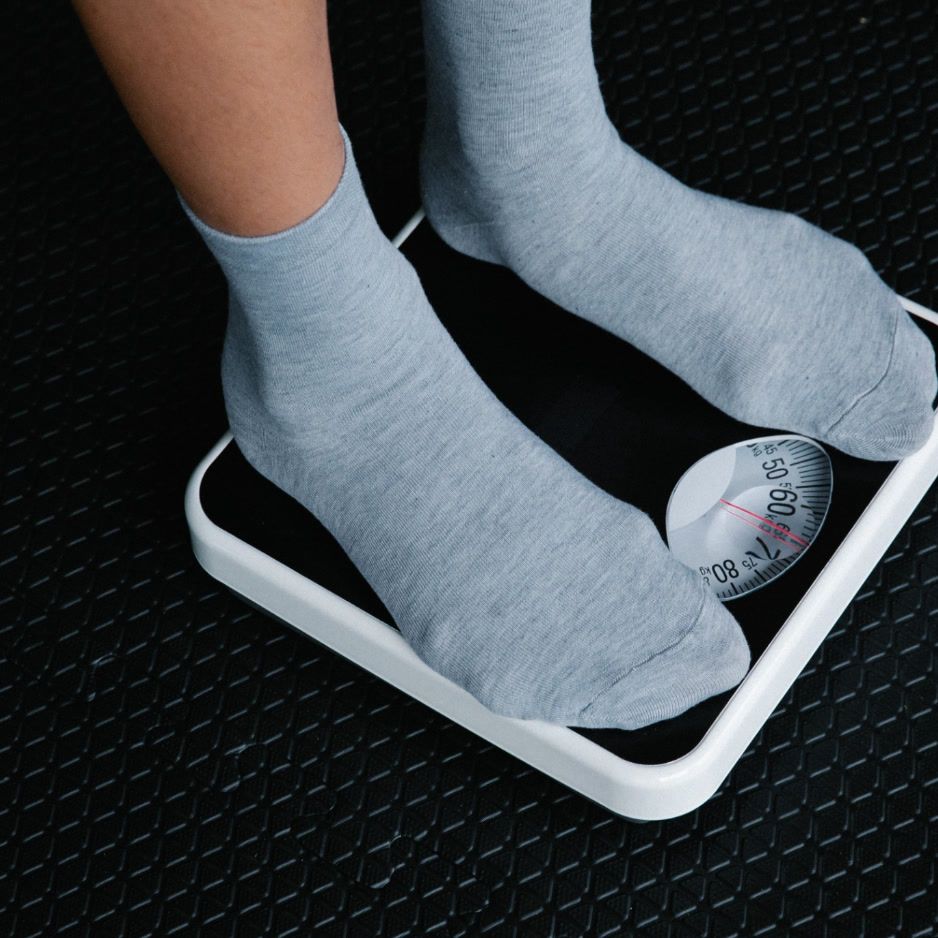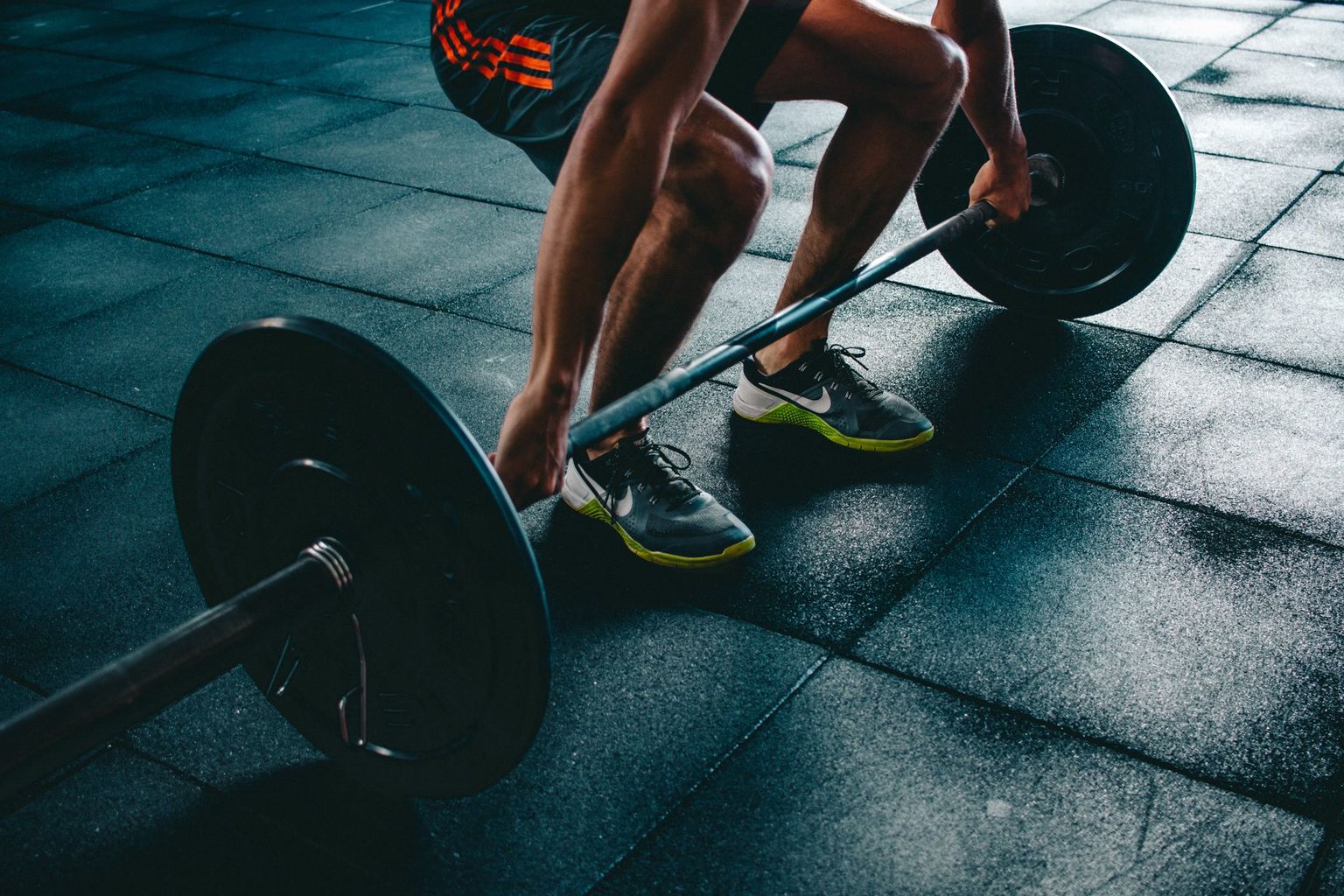Calisthenics vs Weights for Fat Loss: A Science-Backed Comparison
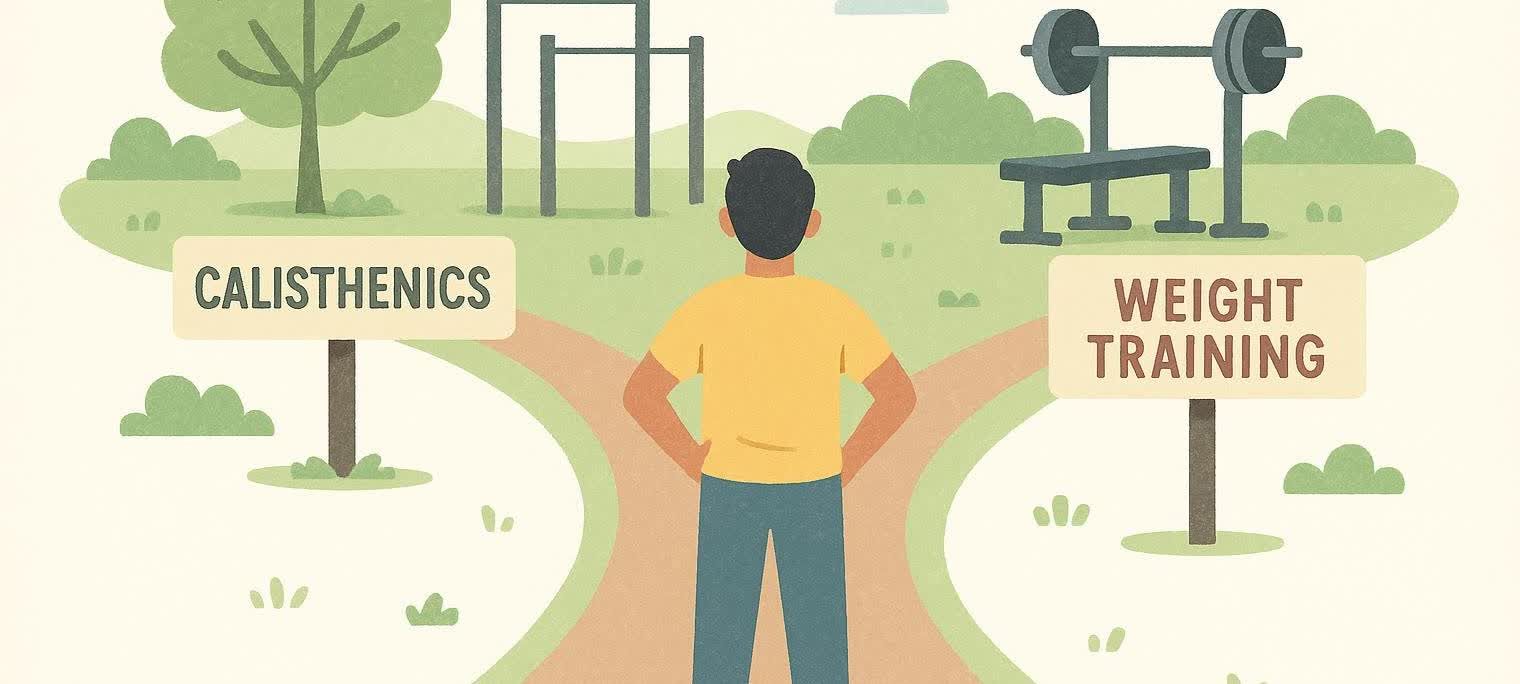
Calisthenics vs Weights for Fat Loss: A Science-Backed Comparison + Hybrid Strategy
TLDR: Both calisthenics and weight training effectively support fat loss when combined with proper nutrition. Calisthenics offers higher immediate calorie burn and convenience, while weights provide better muscle preservation and precise progression. The optimal approach often combines both for maximum results.
Choosing between calisthenics and weight training for fat loss isn't just about calorie burn. It's about finding the approach that maximizes muscle preservation, metabolic benefits, and long-term adherence. This comprehensive guide provides actionable strategies backed by current research. Whether you're a complete beginner, an experienced lifter hitting a plateau, or someone seeking a sustainable long-term approach, you'll find evidence-based solutions here.
Table of Contents
- The Fat Loss Fundamentals: What Actually Matters
- Calisthenics for Fat Loss: Strengths and Science
- Weight Training for Fat Loss: Power and Precision
- The Hybrid Approach: Best of Both Worlds
- Tailored Plans for Different Goals
- Tracking Your Progress with Precision
- Calisthenics vs Weights for Fat Loss: FAQs & Myths
- Which Training Style Is Right for You?
The Fat Loss Fundamentals: What Actually Matters
Before diving into the calisthenics vs. weights debate, let's establish the non-negotiable foundation of fat loss: energy balance. You need to burn more calories than you consume, creating a caloric deficit.
But here's where it gets interesting—not all calorie-burning activities are created equal for fat loss goals.
What Matters Most for Fat Loss
Research consistently shows this priority order for effective fat loss:
- Caloric deficit (most important)
- Protein intake (muscle preservation + satiety)
- Resistance training (maintain muscle mass during deficit)
- Cardiovascular exercise (additional calorie burn + health benefits)
- Stress management (hormonal optimization)
Notice that both calisthenics and weight training fall under "resistance training"—but they achieve similar goals through different mechanisms.
Key Insight: The "best" exercise for fat loss isn't the one that burns the most calories during the workout—it's the one you'll actually stick with consistently while supporting your overall fat loss strategy
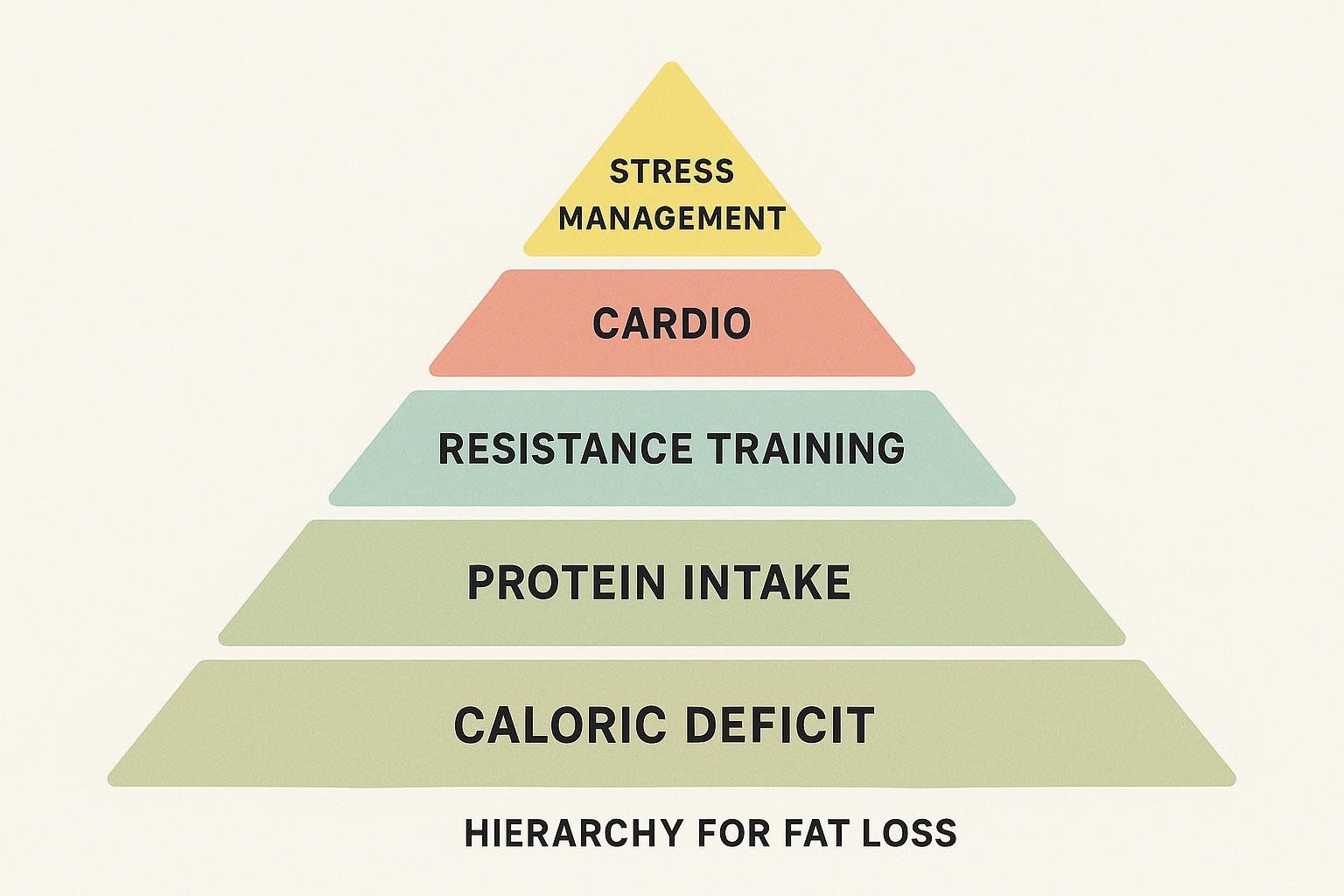
Calisthenics for Fat Loss: Strengths and Science
Calisthenics—using your bodyweight as resistance—offers unique advantages for fat loss that extend beyond simple calorie burning.
The Calorie Burn Advantage
A 2024 study examined physiological responses to bodyweight exercise, finding that full-body calisthenics led to significantly higher post-exercise energy expenditure compared to steady-state exercise:
- 0-5 minutes post-workout: Calisthenics burned 1.7 kcal/min vs. 1.0 kcal/min for steady-state
- 6-10 minutes post-workout: 0.5 kcal/min vs. 0.1 kcal/min
- Fat utilization: 71% of energy from fat post-calisthenics vs. 50% post-steady-state
This "afterburn effect" (technically called EPOC - Excess Post-Exercise Oxygen Consumption) means your body continues to burn calories at an elevated rate even after the workout has concluded. High-intensity bodyweight training creates this effect through:
- Oxygen debt repayment from intense muscle contractions
- Energy expenditure to clear metabolic byproducts like lactate
- Thermoregulation demands when multiple large muscle groups work simultaneously
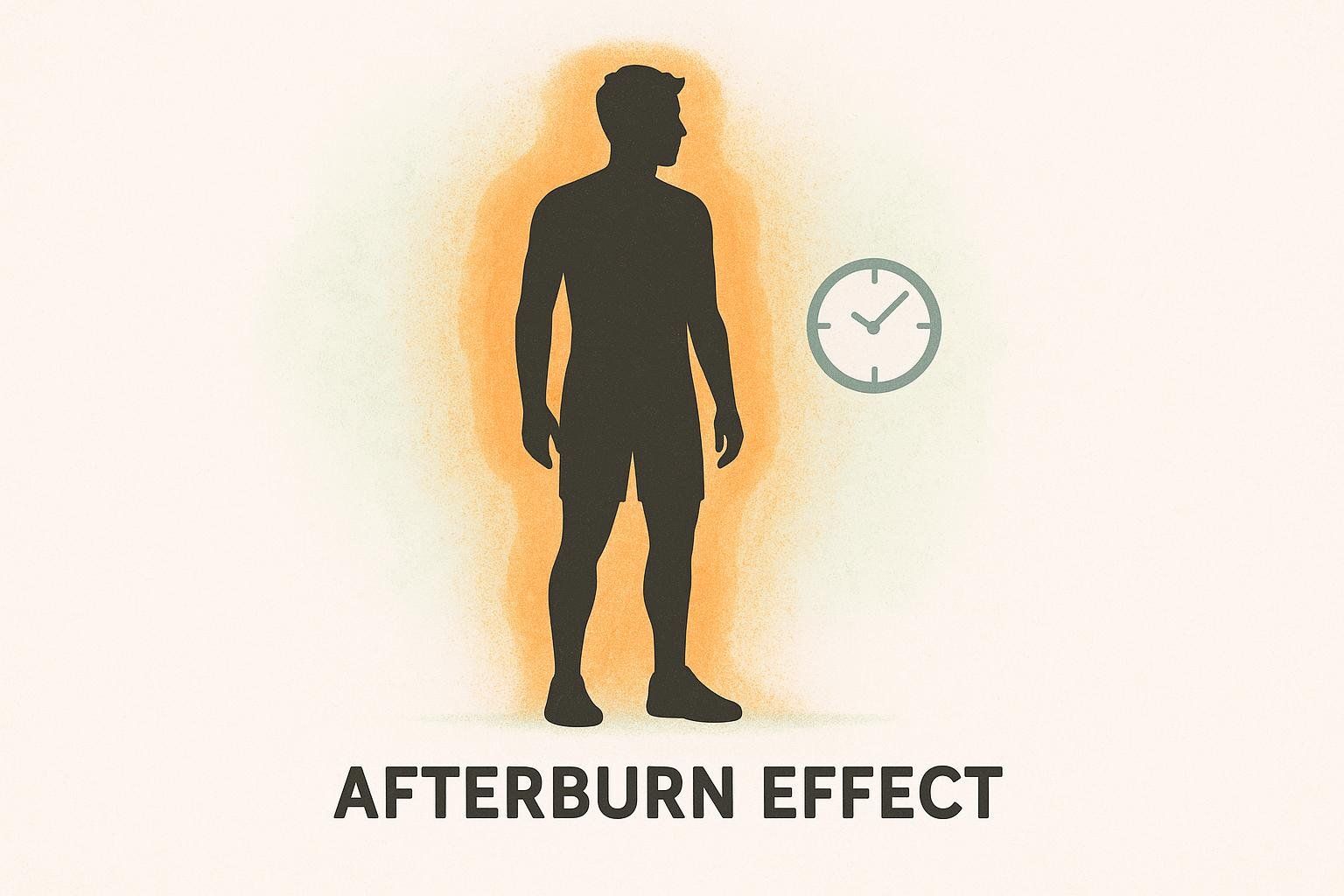
Muscle Building Capacity
A common myth suggests calisthenics can't build meaningful muscle. A 2017 study examining an 8-week calisthenics training intervention in untrained individuals found:
- 39.2% increase in pull-up performance
- 16.4% increase in push-up performance
- Significant reduction in body fat mass (from 14.8% to 11.4%)
- Improved postural control and core strength
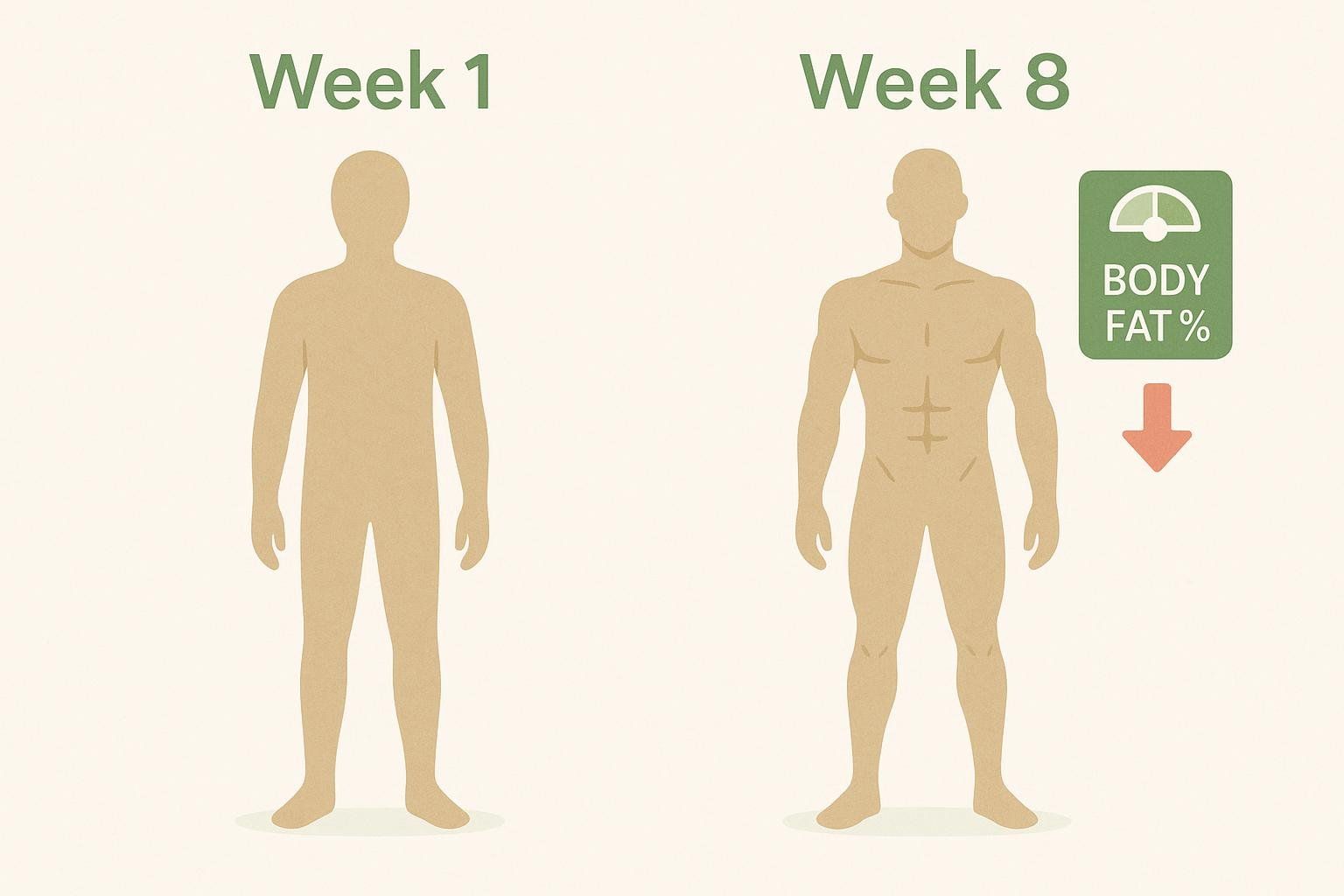
Another study found progressive calisthenic push-up training produced similar muscle thickness gains to bench press training over 4 weeks, with calisthenics showing superior gains in functional pushing strength.
The key mechanism: Resistance training preserves muscle during caloric deficits by providing mechanical tension and progressive overload signals that tell your body to maintain (or build) muscle tissue even when calories are restricted.
The Accessibility Factor
Calisthenics removes common barriers to exercise:
- No gym membership required
- No equipment costs
- Scalable for any fitness level (knee push-ups to one-arm push-ups)
- High movement variety prevents boredom
- Functional strength that transfers to daily activities
Calisthenics Drawbacks for Fat Loss
Progressive overload challenges: While you can progress from regular push-ups to harder variations (archer push-ups, one-arm push-ups), the jumps between progressions can be substantial. This makes it harder to apply the gradual progressive overload that research shows is crucial for continued muscle growth and strength gains.
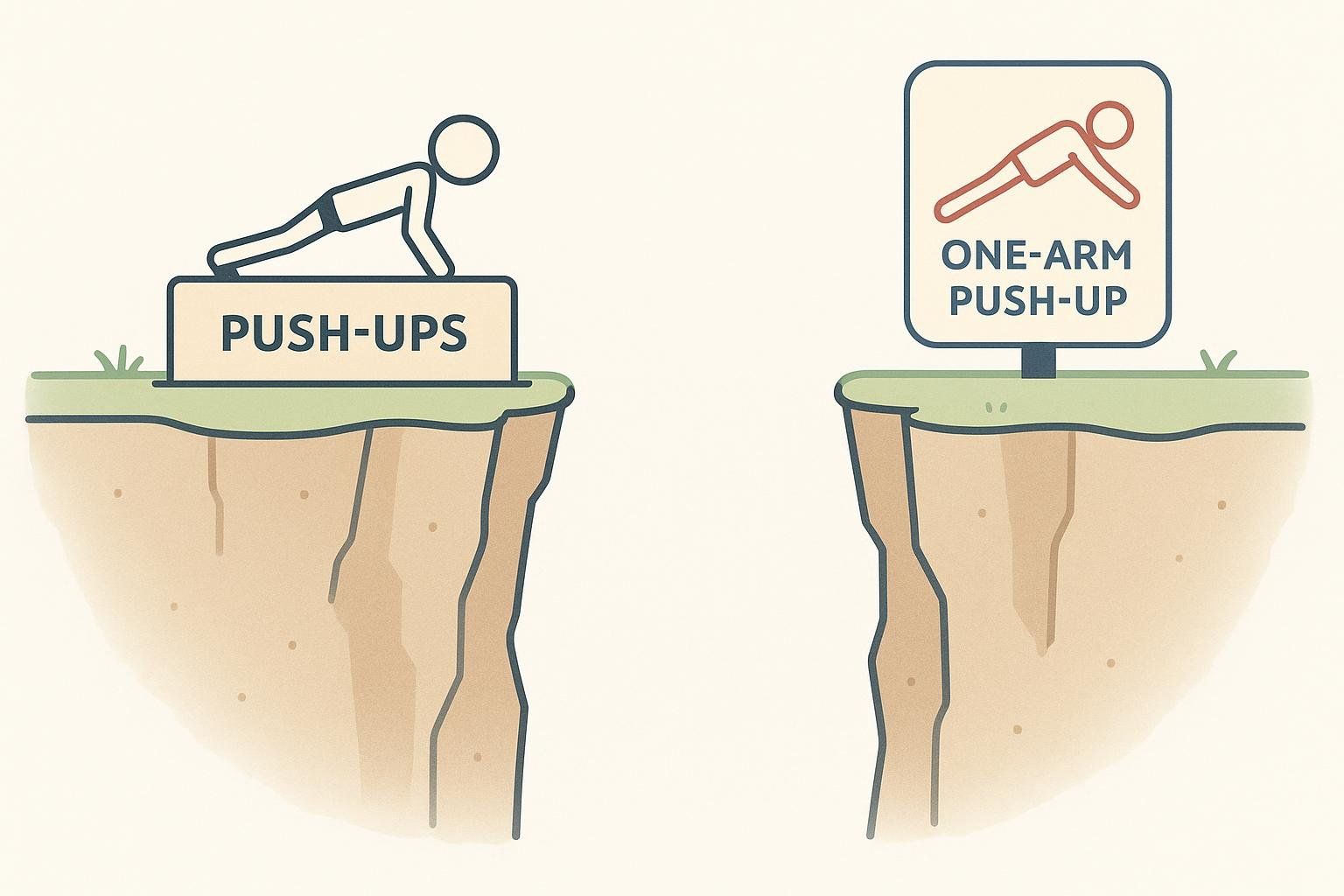
Lower body limitations: Bodyweight squats and lunges can become cardiovascular exercises rather than strength exercises once you can perform high repetitions. Without external weight, it's challenging to provide sufficient stimulus for lower body muscle growth.
Weight Training for Fat Loss: Power and Precision
Weight training offers distinct advantages for fat loss, particularly in areas where calisthenics falls short.
Superior Progressive Overload
Research on overload progression protocols shows that both increasing load and increasing repetitions can effectively promote muscle growth and strength gains. However, weight training makes progressive overload more precise and manageable—you can increase the weight by small increments (2.5-5 lbs) rather than jumping to dramatically harder exercise variations.
Metabolic Advantages
Weight training, particularly when performed in a circuit or with minimal rest, can create significant metabolic demand. High-intensity resistance exercise can elevate oxygen consumption for up to 38 hours post-workout, with studies finding elevated levels at 14, 19, and 38 hours post-exercise following circuit-style strength training.
The EPOC effect varies by workout structure:
- Traditional strength training: Moderate EPOC (5-10% of workout calories)
- High-intensity strength training: Elevated EPOC (10-15% of workout calories)
- Circuit training/supersets: Maximum EPOC (15-20% of workout calories)
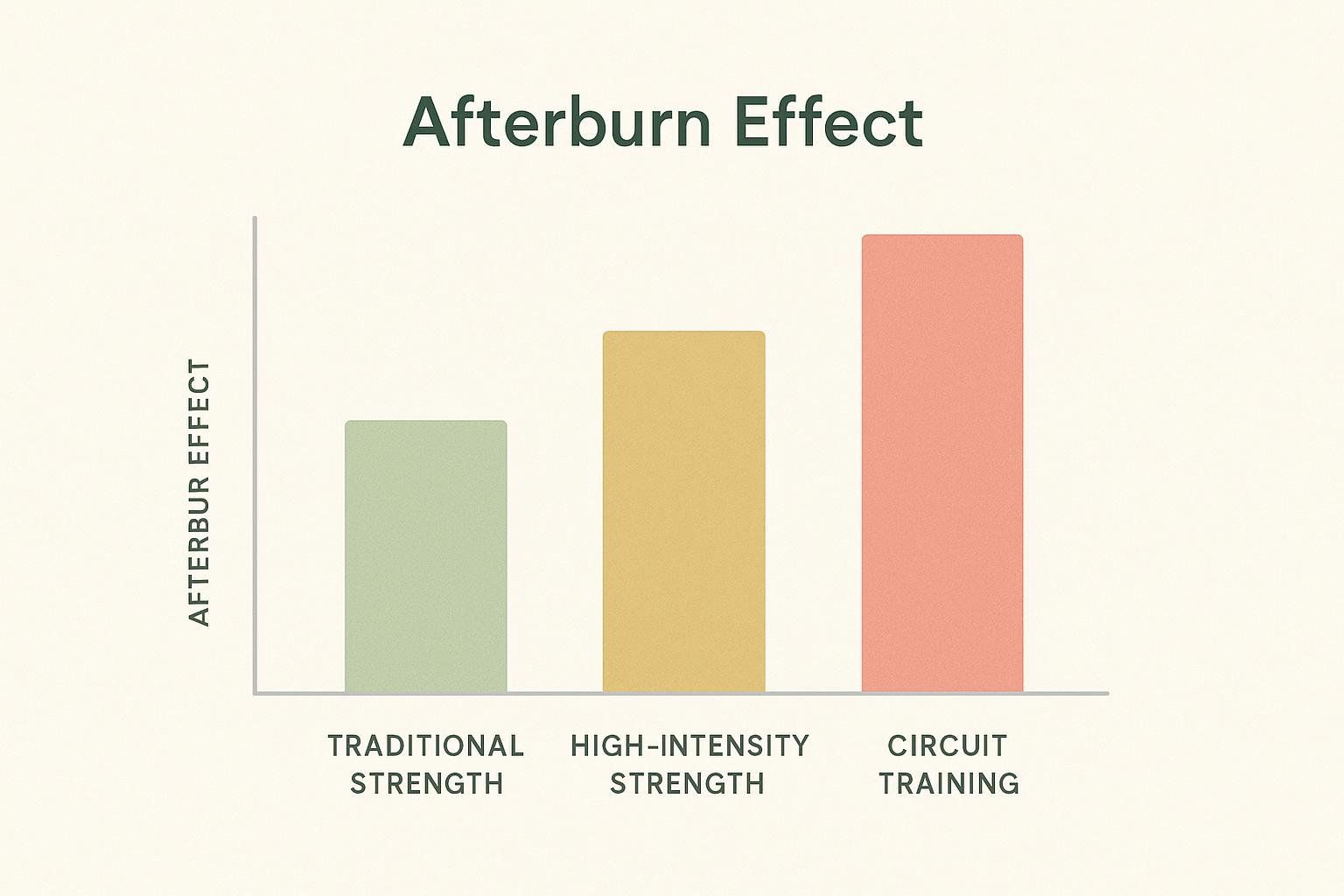
Muscle Preservation During Caloric Deficit
This is where weight training truly shines for fat loss. A landmark 2012 study comparing aerobic training, resistance training, and combined training in overweight adults found:
- Aerobic training group: Lost fat mass but also lost lean muscle mass
- Resistance training group: Lost significant fat mass while also gaining lean muscle mass
- Combined training group: Lost fat mass while gaining lean muscle mass
This result underscores that while resistance training preserves muscle, a caloric deficit remains essential for significant fat loss.
Key insight: Resistance training is essential for preserving muscle during a caloric deficit. This is crucial because research shows muscle tissue burns approximately 3 times more calories at rest than fat tissue (13 kcal/kg/day vs. 4.5 kcal/kg/day).
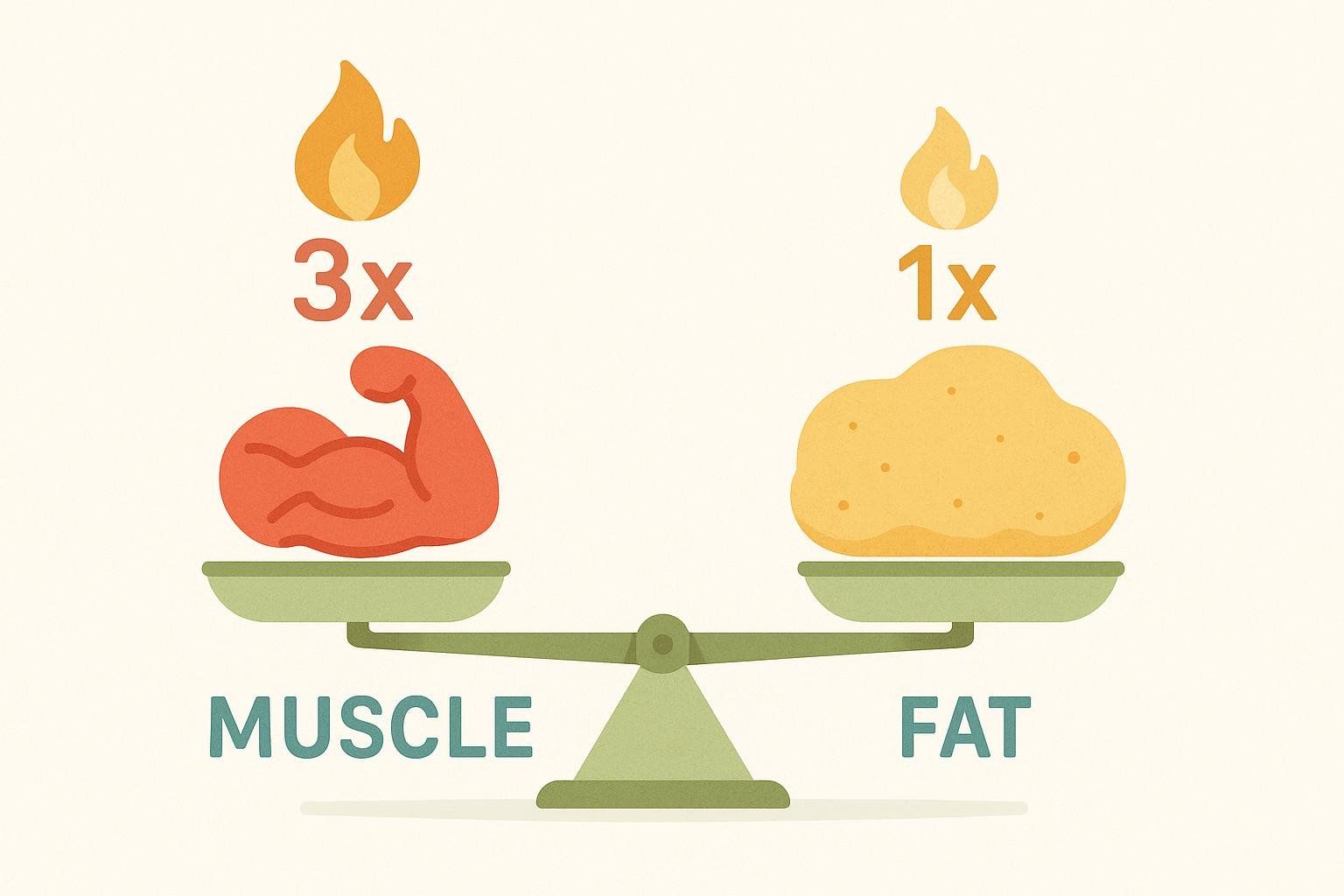
Precision Targeting
Weight training allows you to:
- Target specific muscle groups that may be lagging
- Adjust intensity precisely through load manipulation
- Train in different rep ranges to target both strength and hypertrophy
- Compound and isolation exercises for comprehensive development
Weight Training Drawbacks for Fat Loss
Cost and accessibility barriers: Gym memberships, equipment costs, and travel time can be prohibitive for some people.
Learning curve: Proper form is crucial for safety and effectiveness, requiring initial instruction or research.
Equipment dependence: Without access to progressively heavier weights, advancement stalls.
The Hybrid Approach: Best of Both Worlds
The research suggests that combining calisthenics and weight training may be the optimal approach for fat loss. Here's why:
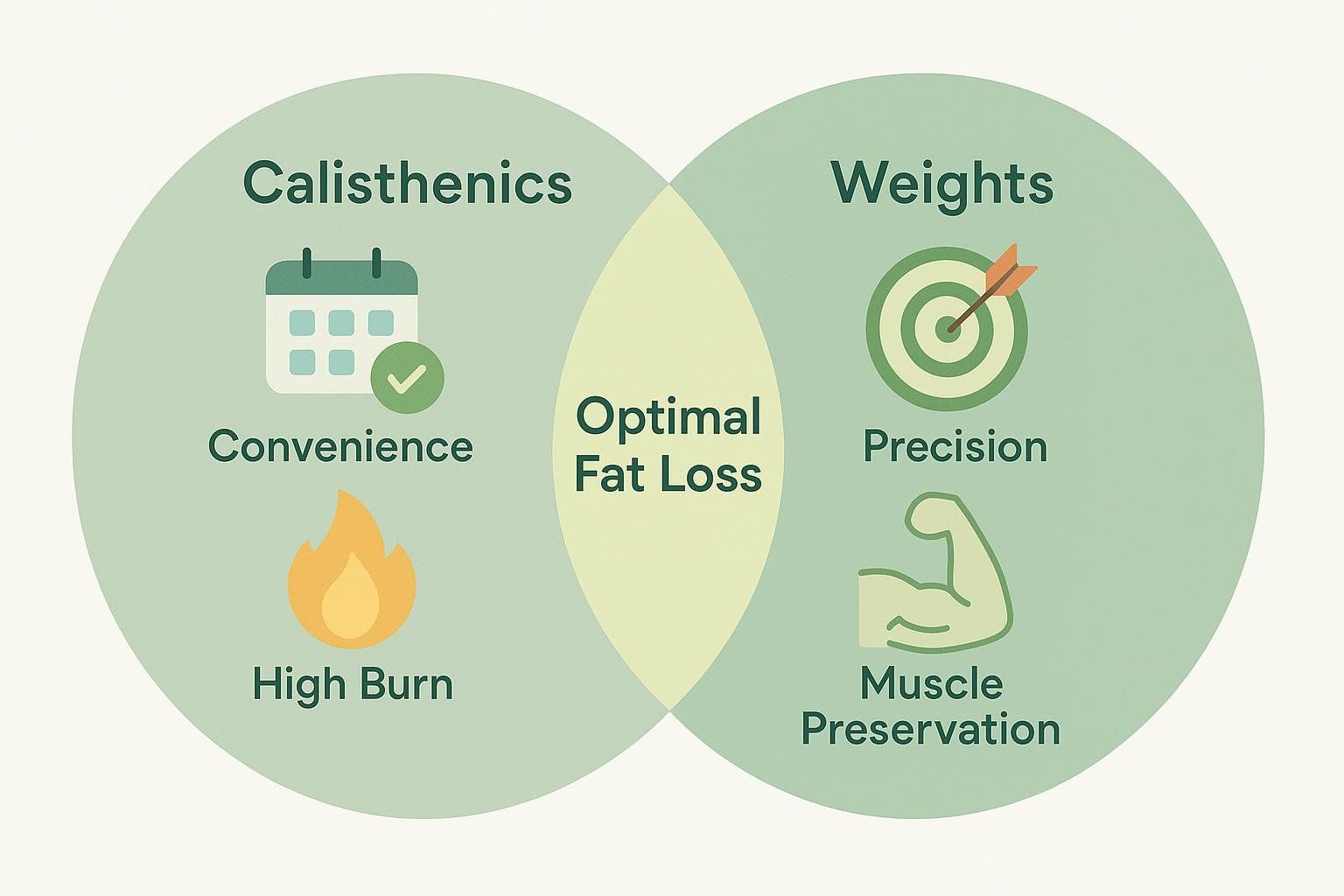
Complementary Strengths
| Calisthenics Provides | Weight Training Provides |
|---|---|
| High calorie burn during exercise | Precise progressive overload |
| Enhanced EPOC/afterburn effect | Superior lower body development |
| Improved movement patterns | Targeted muscle development |
| Convenience and accessibility | Measurable strength progression |
| Functional strength | Maximum muscle preservation |
The Synergistic Effect
Combining both training modalities allows you to:
- Maximize calorie burn through high-intensity bodyweight circuits
- Preserve muscle mass through progressive weight training
- Overcome plateaus by varying stimulus types
- Maintain motivation through exercise variety
- Build well-rounded fitness including strength, power, and endurance
Sample Hybrid Week Structure
Option A: Alternating Days (4-Day Schedule)
- Monday: Full-body weight training
- Tuesday: Rest or light cardio
- Wednesday: High-intensity calisthenics circuit
- Thursday: Rest or light cardio
- Friday: Upper body weights + lower body calisthenics
- Saturday: Active recovery: Mobility-focused calisthenics (e.g., dynamic stretching, yoga)
- Sunday: Complete rest
Option B: Combined Sessions
- Monday: Combined session (weights + calisthenics finisher)
- Tuesday: Rest or light cardio
- Wednesday: Combined session
- Thursday: Active recovery
- Friday: Combined session
- Saturday: Active recovery: Mobility-focused calisthenics (e.g., dynamic stretching, yoga)
- Sunday: Rest
Each combined session structure:
- Warm-up: Dynamic bodyweight movements
- Main: Heavy compound lifts (3-5 sets of 4-8 reps for squats, deadlifts, presses)
- Calisthenics finisher: 5-10 minute AMRAP (As Many Rounds As Possible) of bodyweight exercises like push-ups, inverted rows, and air squats
- Cool-down: Static stretching and mobility
Tailored Plans for Different Goals
Important Disclaimer: Before beginning any new exercise or nutrition program, consult with a healthcare professional, especially if you have underlying health conditions, injuries, or concerns about your current fitness level.
Beginner's Plan: Building a Foundation
- Goal: Lose 15 pounds safely while building basic fitness foundation
- Challenge: Intimidated by gym, limited experience
- Solution: Calisthenics-focused approach with gradual weight training introduction
Before Starting:
- Take 'before' photos and key body measurements (e.g., weight, waist circumference)
- Schedule a baseline DEXA scan for the most accurate tracking of body composition changes
Week 1-4: Foundation Building
- 3x/week bodyweight circuits (20-30 minutes)
- Focus: Form mastery, movement patterns, habit formation
- Example Circuit: Perform 3 rounds of the following, resting 60 seconds between rounds: 10 Bodyweight Squats, 8 Modified Push-ups (from knees), 30-second Plank, 12 Superman Lifts
Week 5-8: Progressive Challenge
- Add resistance bands or light dumbbells
- Increase workout frequency to 4x/week
- Introduce basic compound movements: goblet squats, dumbbell rows, Romanian deadlifts
Week 9-12: Strength Integration
- 2 bodyweight sessions + 2 basic weight training sessions
Nutrition Focus:
- Moderate caloric deficit (300-500 calories below maintenance)
- Aim for 1.4-2.0g of protein per kg of bodyweight daily to support muscle preservation and recovery
- Emphasize whole foods, adequate hydration
Advanced Plan: Breaking Through Plateaus
- Goal: Break through fat loss plateau, lose final 10 pounds
- Challenge: Bored with routine, body adapted to current training
- Solution: Strategic periodization combining metabolic calisthenics with strength-focused weight training
Phase 1: Metabolic Shock (4 weeks)
- High-intensity calisthenics circuits 3x/week (e.g., circuits including burpees, jump squats, and pull-up variations)
- Maintain 2x/week heavy lifting, focusing on compound movements in the 3-5 rep range to maximize strength (e.g., sessions focused on squats, deadlifts, and bench press)
- Focus: EPOC maximization, movement variation
Phase 2: Strength + Conditioning (4 weeks)
- 3x/week weight training (strength focus), working primarily in the 5-8 rep range with an emphasis on weekly progressive overload
- 2x/week calisthenics conditioning
- Focus: Muscle preservation, progressive overload
Phase 3: Integration (4 weeks)
- Hybrid sessions combining weights + bodyweight finishers
- Focus: Sustainable long-term approach
Advanced Strategies:
- Periodized nutrition (higher calories on training days)
- Regular DEXA scans to track body composition changes
- Heart rate variability monitoring for recovery optimization
Health-Focused Plan: Sustainable Fat Loss for Aging Well
- Goal: Sustainable, health-focused fat loss for aging well
- Challenge: Skeptical of fitness industry claims, wants research-backed approach
- Solution: Conservative, joint-friendly approach emphasizing functional movement and health markers
For this plan, a valuable strategy is to consult with a physician to track key blood biomarkers (e.g., lipid panel, HbA1c, inflammatory markers) throughout your program to monitor overall health improvements alongside fat loss.
Training Structure:
- 2x/week full-body weight training (using a mix of machines for stability and free weights with an emphasis on perfect form)
- 1x/week calisthenics flow (yoga-inspired, mobility emphasis)
- Daily walking for cardiovascular health
Key Focuses:
- Bone density preservation through progressive overload
- Flexibility and mobility maintenance
- Cardiovascular health through low-impact activities
- Sleep optimization and stress management
Tracking Methods:
- Quarterly DEXA scans for bone density and body composition
- Functional movement assessments
- Sleep quality and HRV monitoring
Tracking Your Progress with Precision
The scale alone won't tell you if you're successfully losing fat while preserving muscle. Here's how to track your progress accurately:
DEXA Scans: The Gold Standard
DEXA (dual-energy X-ray absorptiometry) provides precise measurements of:
- Fat mass (total and regional)
- Lean muscle mass (total and segmental)
- Bone density (important for long-term health)
- Visceral fat levels (the dangerous fat around organs)
Recommended frequency: Every 8-12 weeks during active fat loss phases
Complementary Tracking Methods
Weekly measurements:
- Scale weight (same time, same conditions)
- Waist circumference
- Hip circumference
- Body fat percentage from a BIA home scale (Note: BIA scales are less precise than DEXA and influenced by hydration, meals, and time of day)
Monthly assessments:
- Progress photos (same lighting, poses, time of day)
- Performance metrics (strength benchmarks, endurance markers)
- Circumference measurements (arms, thighs, chest)
Daily tracking:
- Energy levels (1-10 scale)
- Sleep quality and duration
- Hunger/satiety ratings
- Workout performance notes
When to Adjust Your Approach
Plateau indicators:
- No change in measurements for 3-4 weeks
- Declining workout performance
- Constant hunger or fatigue
- Loss of motivation
Success indicators:
- Steady fat loss (0.5-1% bodyweight per week)
- Maintained or increased strength
- Improved energy levels
- Better sleep quality
Calisthenics vs Weights for Fat Loss: FAQs & Myths
What is better for fat loss, weights or calisthenics?
Neither approach is definitively "better"—both can effectively support fat loss when combined with proper nutrition. Research shows the most effective approach combines resistance training with proper nutrition. Choose the method you'll stick with consistently, or consider a hybrid approach for optimal results.
Can you build enough muscle with just calisthenics to boost your metabolism?
Yes, calisthenics can build significant muscle mass with proper progression. Studies demonstrate similar muscle gains to weight training, and muscle tissue burns significantly more calories at rest than fat tissue. While lower body progression may plateau without external weight, upper body progressions offer excellent metabolic benefits.
Is calisthenics effective for people with higher body fat?
Yes, calisthenics is highly effective because it's scalable, joint-friendly, and accessible. Studies show resistance training is effective for fat loss in overweight populations. Exercises are easily modified—start with wall push-ups and assisted squats, then progress gradually.
Myth: "Cardio is best for fat loss"
Reality: While cardio burns calories during exercise, resistance training (both calisthenics and weights) provides superior long-term benefits through muscle preservation and EPOC effects. Research shows combined resistance and aerobic training produces the best fat loss results while maintaining lean muscle mass.
Myth: "You need to lift heavy to lose fat"
Reality: Studies show progressive calisthenic training can produce similar muscle-building and fat loss benefits to traditional weight training when performed with appropriate progression, even without external weights.
Myth: "Muscle weighs more than fat"
Reality: A pound is a pound. However, muscle is denser than fat, so gaining muscle while losing fat can make you smaller and leaner even if the scale doesn't change. This is why body composition tracking is crucial.
Myth: "Spot reduction is possible"
Reality: You cannot target fat loss from specific areas through exercise. Fat loss occurs systemically, determined largely by genetics and hormones. However, building muscle in specific areas can improve the appearance of those regions.
Myth: "More is always better"
Reality: Recovery is when adaptations occur. Research indicates optimal training volume exists for muscle hypertrophy, with diminishing returns beyond 20 weekly sets per muscle group—exceeding this can impair progress and increase injury risk.
Which Training Style Is Right for You?
Both calisthenics and weight training can effectively support fat loss, but each excels in different areas. The most successful approach depends on your goals, preferences, and lifestyle. Your best choice may even be a strategic combination of both methods, using calisthenics for convenience and metabolic benefits while incorporating weights for precise progression and muscle preservation.
The Most Important Factor
Consistency trumps everything else. The best fat loss approach is the one you'll stick with long-term. Whether that's calisthenics, weights, or a combination depends on your preferences, lifestyle, and goals.
Your Next Steps
- Assess your current situation: Experience level, available time, access to equipment
- Set clear, measurable goals: How much fat to lose, timeframe, performance benchmarks
- Choose your primary approach: Based on the guidelines above
- Plan your progression: How you'll increase difficulty over 12-16 weeks
- Schedule your first DEXA scan: Establish baseline measurements
- Start today: Consistency over the next 12 weeks will determine your success
Remember: the perfect plan executed inconsistently will always lose to the good plan executed consistently. Choose the approach that fits your life, and stick with it long enough to see results.
Ready to see exactly how your chosen approach is working? Book a DEXA scan with BodySpec to get precise measurements of your fat loss and muscle preservation progress. Your first scan provides the baseline data to optimize your strategy, whether you choose calisthenics, weights, or the hybrid approach.

